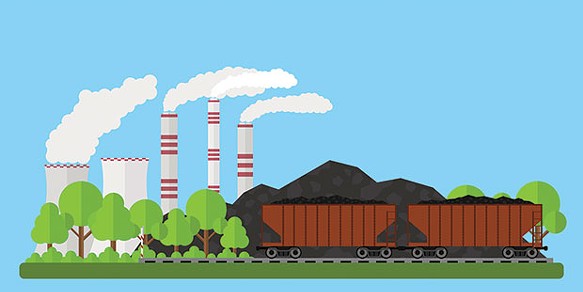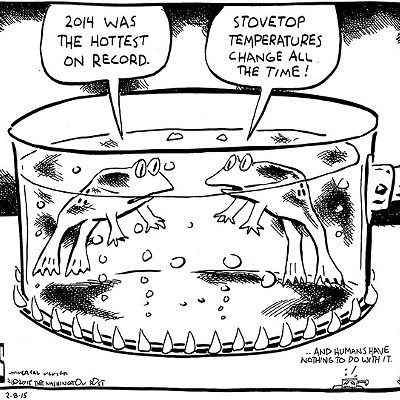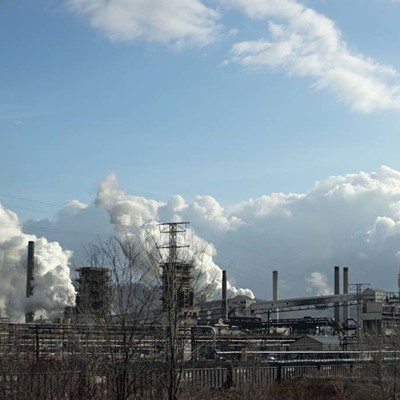A controversial technology touted to fight climate change is back in the news.
Carbon capture and storage (CCS) is the process of stripping carbon dioxide from the emissions of coal-fired power plants — the world’s largest source of greenhouse gasses — then compressing it into a liquid and piping it deep underground. While CCS has long been studied, it’s been deployed mostly in demonstration projects. But in January, near Houston, NRG Energy opened the nation’s first large-scale CO2-capture project at a coal-fired plant. The commercial project, named Petra Nova, raised CCS supporters’ hopes.
The controversy over CCS, however, doesn’t reflect the familiar struggle between people worried about climate change and those who deny that it’s real. Instead, it’s two groups equally concerned about climate. CCS supporters contend that because the world will likely continue relying on coal, oil and natural gas for decades, CCS is needed to reduce emissions to acceptable levels. Critics counter that CCS is costly and unproven, and that instead we should pursue energy conservation, efficiency and renewable energy, eliminating the need for fossil fuels altogether. In recent years, articles in Wired and National Geographic have backed CCS as necessary, while pieces in The New York Times and Fortune have voiced skepticism.
CCS backers include Edward Rubin, a Carnegie Mellon University professor of engineering and public policy. Rubin calls CCS one of the most cost-effective ways to get big reductions in CO2 emissions, and emphasizes that it can also be employed at gas-fired power plants and other industrial facilities. He acknowledges that CCS is pricey, but notes that once a technology is deployed commercially, costs invariably drop. The big obstacle for CCS, he says, is that polluters still lack an economic incentive to employ it; a strong government climate policy, like a price on carbon emissions, would make it feasible. “The technology is ready to go and waiting for a reason to use it,” says Rubin.
But many environmental groups are wary of CCS — and only partly because it threatens to prolong the devastation wrought by coal-mining; the problems associated with coal-ash disposal; and all the other air pollution created when we burn coal. Critics emphasize that power plants using CCS require about 30 percent more energy; that would mean even more mining, and an increase in the price of electricity, even as power from renewables like wind and solar grows ever cheaper. CCS “continues to be extremely expensive,” says Tom Schuster, the Johnstown-based senior campaign representative for the Sierra Club’s Beyond Coal campaign. “It’s unlikely that it’s ever going to be cost-competitive.”
Schuster cites the Southern Company’s Kemper County plant, in Mississippi, which only just opened after years of delays and $4 billion in cost overruns — and which at press time wasn’t even capturing CO2 yet. Moreover, that new NRG plant near Houston is economically viable only because it sells its CO2 to oil companies who use it to force more oil from the ground: not exactly a win-win for the climate. And because CCS research has been heavily subsidized by the federal government, pursuing it carries an opportunity cost: “There are limited resources; we should be focusing our attention elsewhere,” says Schuster.
Even some researchers working on CCS have doubts about its economic viability. At a recent talk at Carnegie Science Center, for instance, Christopher E. Wilmer, an assistant professor in the University of Pittsburgh’s department of chemical and petroleum engineering, described a revolutionary method for capturing carbon, which substitutes synthetic molecules called MOFs for the solvents currently used to strip carbon from emissions. Ideally, the new method would raise electricity prices somewhat less than current CCS techniques. But with the price of renewables still falling, Wilmer said, “It could be that CO2 capture is just fundamentally uncompetititive.”
About those renewables: Some CCS critics say they are already cheaper than coal-fired electricity. CCS proponents counter that power from renewables remains intermittent (the sun doesn’t always shine, etc.), and that advocates for renewables tend to discount the cost of energy storage and other technology that a massive shift to renewables would entail.
Then there are the issues surrounding the underground storage of carbon, typically in saline aquifers or exhausted oil or gas wells. CMU’s Rubin says that given the proper geology and monitoring, storage can be done right. But critics note that a leak would undo all of one’s expensive CCS work. Schuster cites the earthquakes caused by underground storage of waste fluid from fracking. Another question is the political viability of CCS. The Obama administration supported CCS — going so far, for instance, as to pledge $1 billion to revive a CCS project called FutureGen 2.0, which had failed under the Bush administration, before again pulling the plug in 2015. On the campaign trail, Donald Trump occasionally blurted out the words “clean coal,” but as with so much else, it’s unclear what he meant by the phrase. Further, while stored carbon would require monitoring for several decades (at least), the world’s longest-running experience with carbon storage, in Norway, dates back only two decades.
Coal is inescapably a dirty energy source from the mine shaft on. “Clean coal” is a contradiction in terms, but it’s used as a marketing slogan to reference a variety of strategies for making coal’s use less damaging. One such strategy is CCS. But why would Trump, who doesn’t seem to accept the scientific consensus on climate change, commit any resources to address the problem? In the near term, that might be as big a question as how well CCS can actually do the job.
[Editor's note: The original online version of this article has been revised to more accurately reflect the time span that underground carbon storage would require monitoring.]

















